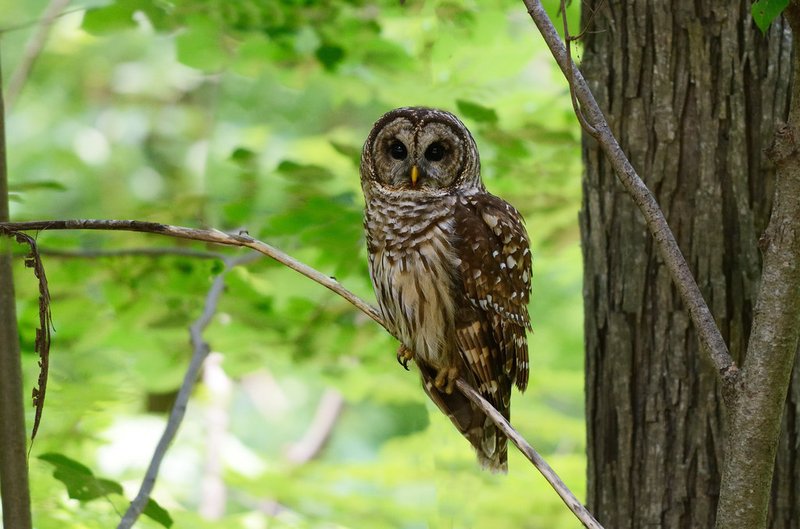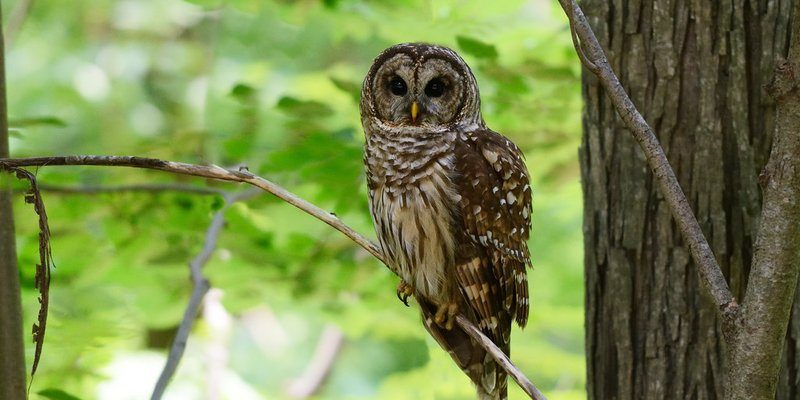
Across different regions, the barred owl is more than just a creature of the night; it’s a symbol loaded with meaning. It captures the imagination, often appearing as a character in tales that explain natural phenomena, teach moral lessons, or express community beliefs. Let’s dive into how this fascinating bird has been represented across various cultures and what those representations say about human connection to nature.
Cultural Significance of the Barred Owl
Different cultures around the world have unique interpretations and stories involving the barred owl. In many Native American traditions, the barred owl is seen as a guardian and a messenger between the physical and spiritual worlds. For example, the Iroquois regard the barred owl as a symbol of transformation and change. They believe that when you hear its call, it signals a shift or the need to pay attention to your surroundings.
Similarly, in the folklore of some Indigenous tribes in the Pacific Northwest, the barred owl is linked to wisdom and foresight. It’s not uncommon to hear tales of elders interpreting the owl’s call as a sign to embrace new opportunities or to be cautious of impending challenges. These stories not only reinforce the owl’s role in the ecosystem but also highlight how human experiences are often intertwined with the natural world.
Barred Owls in American Folklore
In the United States, the barred owl’s call has inspired numerous local legends and folklore. One common story centers around the idea that the owl is a bad omen. Many believe that hearing a barred owl at night signals distress or misfortune. This cultural perception can often lead to a mixture of fear and respect for the creature.
On the flip side, some regions have embraced the barred owl as a friend. In Appalachian folklore, tales of the barred owl are often spun into stories of camaraderie and protection. Locals would recount how, during tough times, the presence of a barred owl brought comfort and hope. It’s interesting how this bird can embody both caution and companionship, depending on the story being told.
Symbolism in Literature and Arts
The barred owl isn’t just hanging out in oral traditions; it has made its way into various forms of literature and art. Poets and authors often use this owl as a symbol of wisdom and mystery. Take, for instance, the famous poem “The Barred Owl” by Richard Wilbur, where the bird becomes a metaphor for understanding the complexities of life. The juxtaposition of its beautiful appearance against its haunting calls captures a sense of depth and contemplation.
In art, the barred owl features prominently in paintings and sculptures, often portrayed in a way that emphasizes its watchful nature. Artists love to highlight its intricate plumage and striking eyes, encapsulating the essence of this nocturnal creature. Each brush stroke or chisel mark serves to immortalize the owl’s significance in human culture.
Barred Owls in Nature Myths
Throughout history, nature myths about the barred owl often reflect humanity’s attempt to make sense of the world. Many cultures attribute various natural phenomena to the actions of these birds. In some Native American stories, the barred owl is linked to the changing seasons and the cycles of life. For example, a legend might explain how the owl’s call heralds the arrival of spring, signaling that it’s time for planting and renewal.
In other cultures, such myths revolve around the idea of the owl as a protector of the forest. People believed that if they treated the owl well, it would protect their lands and ensure bountiful harvests. This belief underscores the relationship between the land, its creatures, and the communities that rely on them for sustenance and survival.
Conservation and Modern Perspectives
As we move into a more modern world, the barred owl’s role in culture and folklore has started to change. With urbanization and habitat destruction, there’s an increasing need to address conservation efforts to protect these magnificent creatures. Organizations focused on wildlife conservation often highlight the barred owl’s importance as an indicator species. If the barred owl thrives, it often means that its ecosystem is healthy.
Moreover, many contemporary cultures are beginning to reconnect with their local wildlife through storytelling and education. Workshops and community events are held to teach people, especially the younger generation, about the ecological significance of the barred owl. Through these efforts, there’s a drive to foster a deeper understanding of nature and to ensure that stories about these birds continue to thrive.
The Barred Owl in Popular Media
In recent years, popular media has also started to take an interest in the barred owl. Documentaries and wildlife shows often feature these owls, highlighting their intriguing behaviors and distinctive calls. These portrayals help raise awareness about the importance of owls in ecosystems, while also captivating audiences with their charm.
Books for children have also embraced the barred owl, often presenting it as a character that embodies wisdom and adventure. Through enchanting stories, young readers are introduced to the world of wildlife, fostering a sense of respect and curiosity about nature’s creatures.
The barred owl is not just a bird; it’s a symbol deeply rooted in various cultures and folklore. From acting as a spiritual messenger to being portrayed in literature and art, it connects humanity to nature in profound ways. As we continue to confront challenges like habitat loss and climate change, understanding the role of the barred owl in our cultural narratives is more important than ever. It reminds us of the rich tapestry of stories that weave together our experiences with the natural world. So next time you hear the familiar call of the barred owl, take a moment to appreciate not just the creature itself but the rich history and stories that surround it.

